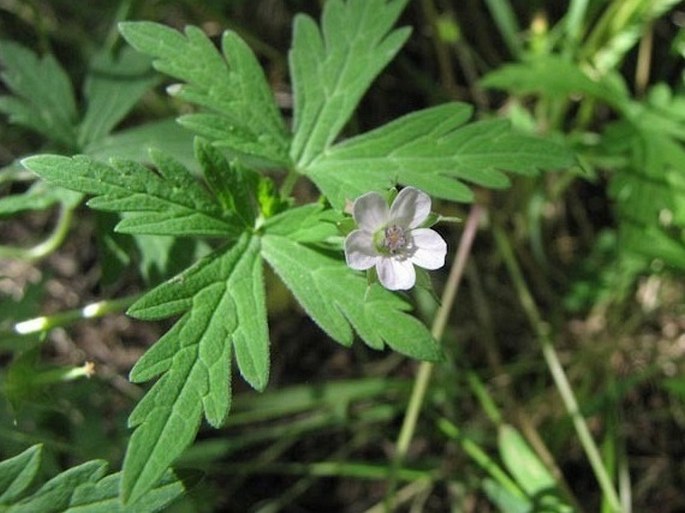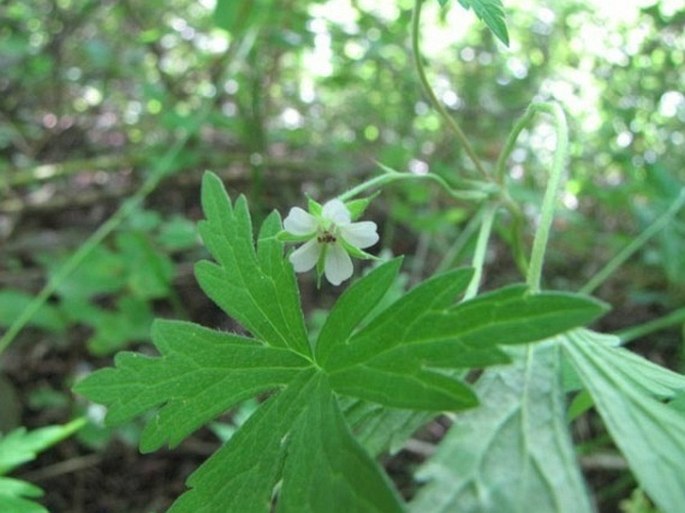Syn.: Geranium bicknellii var. longipes Fernald, Geranium carolinianum var. longipes S. Watson, Geranium nemorale var. bicknellii (Britton) Fernald
Family: Geraniaceae Juss.

Distribution: Northern American species – from Alaska and Yukon through a large part of Canada and north part of USA to Quebec, New England, Tennessee and northern California.
Ecology: Woodland, roadside, waste areas, weedy, but hard to find. Blooms in June to August.
Description: Annual to biennial herb. Stems 20–60 cm tall, decumbent to erect, sticky-haired, spreading, branched. Leaves are opposite, 2–7 cm across, palmately divided into 5 wedge-shaped lobes. Flowers are solitary or in pairs, borne in leaf axils. Flowers 8–12 mm across; sepals 5, sharp pointed; petals 5, pinkish, sometimes rose; stamens 10; pistil 1. Fruit is a capsule about 2 cm long, splitting from the bottom upward, similar to many other Cranesbills, seeds long tailed.
Usage: The roots of this plant, rich in tannin, make an astringent tea that can be taken to treat mouth and throat sores, urinary problems and intestinal diseases.
Threat and protection: Listed as endangered in American states of Connecticut, Illinois, Indiana, Ohio, Pennsylvania and Rhode Island.



These images were taken in Canada, Alberta, Calgary, North Glenmore Park (July 2012).


